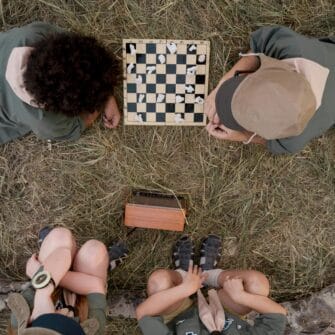Brainteasers
The Logicians
Here’s a slight variation on a classic brainteaser, albeit it’s still a tough one!
Three extremely skilled logicians, A, B, and C, are seated around a table.
A knows his own IQ is 120, B knows hers is 130, and C knows his is 140.
What they don’t know is each other’s IQ. However, they do know the following information:
- At least one of them has an IQ of 120 or higher.
- At least one of them has an IQ of 130 or higher.
- At least one of them has an IQ of 140 or higher.
Their task is to determine the IQs of their peers. The moderator, who knows each of their IQs, will only answer yes/no questions but will not answer any question that would directly reveal a logician’s IQ.
Here are the questions they ask and the moderator’s answers:
A: “Does at least one of us have an IQ higher than mine?”
Moderator: “Yes.”
B: “Does at least one of us have an IQ higher than mine?”
Moderator: “Yes.”
C: “Does at least one of us have an IQ higher than mine?”
Moderator: “No.”
After these questions, there is a long pause while they all think. Then, all three logicians figure out the IQs of their peers at exactly the same time.
How did they do it?!
It is, indeed, a logical process to work this out.
- A asks if anyone has an IQ higher than 120. The moderator says, “Yes”. Therefore, either B or C, or both, must have an IQ higher than 120.
- B then asks if anyone has an IQ higher than 130. The moderator says, “Yes”. Therefore, only C can have an IQ higher than 130 because A’s IQ is 120, which is not higher than 130.
- C then asks if anyone has an IQ higher than 140. The moderator says, “No”. This does not provide new information to C because he knows his own IQ, but it informs A and B that C’s IQ is definitely 140.
Here’s how they figure out everyone’s IQ:
- A knows from his question that one of the others has an IQ higher than his. When B asks her question, A learns that C must be the one with an IQ higher than 130 because A knows his IQ is not higher than 130, and the moderator just confirmed that at least one person has an IQ higher than 130. So, A figures out that B’s IQ must be 130 and C’s must be 140.
- B knows from her question that C must have an IQ higher than 130. When C asks his question, B, like A, learns that C’s IQ is definitely 140. Thus, B also figures out that A’s IQ must be 120 and C’s must be 140.
- C already knows from the answers to A’s and B’s questions that his IQ is the highest. After he asks his question and gets a “No”, he doesn’t learn anything new. However, once he hears A and B have figured out everyone’s IQs, he realizes that the only way they could have done that is if A’s IQ is 120 and B’s IQ is 130.
So, all three, A, B, and C, figure out everyone’s IQs based on the information provided and their logical deductions.





















